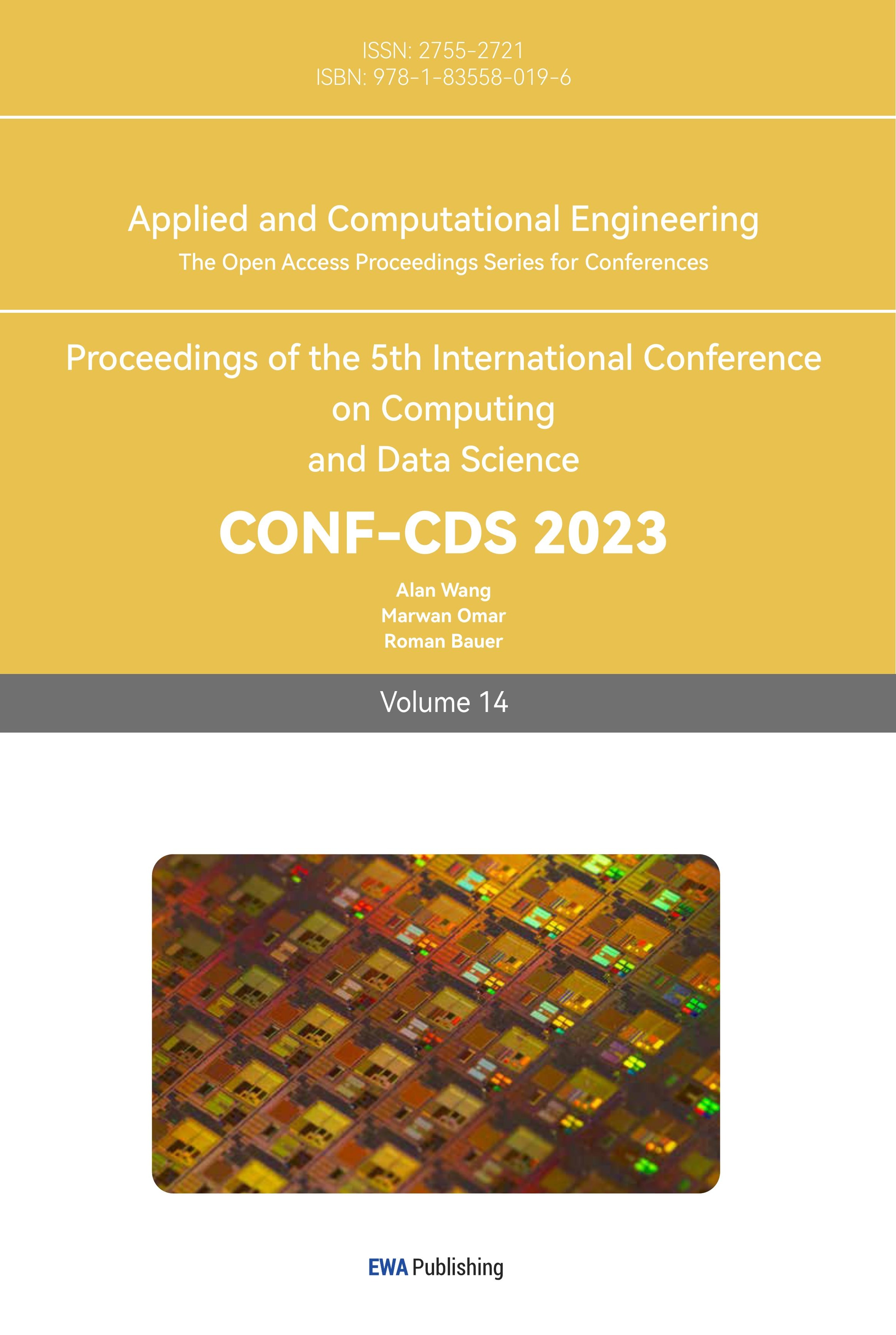References
[1]. W. Xian, J.-B. Huang, J. Kopf, and C. Kim, “Space-time neural irradiance fields for free-viewpoint video,” 2020.
[2]. M. Xu et al., “A full dive into realizing the edge-enabled metaverse: Visions, enabling technologies, and challenges,” IEEE Communications surveys and tutorials, vol. 25, Art. no. 1, 2023.
[3]. A. Puder, S. Markwitz, F. Gudermann, and K. Geihs, “AI-based trading in open distributed environments,” K. Raymond and L. Armstrong, Eds. Springer US, 1995, pp. 157–169. doi: https://doi.org/10.1007/978-0-387-34882-7%E2%82%812.
[4]. R. Jiang, P. Chazot, N. Pavese, D. Crookes, A. Bouridane, and C. M. Emre, “Private facial prediagnosis as an edge service for parkinson’s DBS treatment valuation,” IEEE journal of biomedical and health informatics, vol. 26, Art. no. 6, 2022.
[5]. A. Alharthi, Q. Ni, and R. Jiang, “A privacy-preservation framework based on biometrics blockchain (BBC) to prevent attacks in VANET,” IEEE access, vol. 9, pp. 87299–87309, 2021.
[6]. R. Jiang, M. L. Parry, P. A. Legg, C. David, and I. W. Griffiths, “Automated 3-D animation from snooker videos with information-theoretical optimization,” IEEE transactions on computational intelligence and AI in games., vol. 5, Art. no. 4, 2013.
[7]. Y. R. V, B. Klare, and J. A. K, “Face recognition in the virtual world: Recognizing avatar faces,” 2012, vol. 1, pp. 40–45.
[8]. S. Liu, Ngiam, Kee Yuan, and M. Feng, “Deep reinforcement learning for clinical decision support: A brief survey,” 2019.
[9]. Ando and Thawonmas, “LEVEL OF INTEREST IN OBSERVED EXHIBITS IN METAVERSE MUSEUMS,” 2013.
[10]. J.-L. Lugrin and M. Cavazza, “AI-based world behaviour for emergent narratives,” 2006, pp. 25–es.
[11]. K. B. Ravi et al., “Deep reinforcement learning for autonomous driving: A survey,” IEEE transactions on intelligent transportation systems, vol. 23, Art. no. 6, 2022.
[12]. X. Liao et al., “Iteratively-refined interactive 3D medical image segmentation with multi-agent reinforcement learning,” 2019.
[13]. OpenAI et al., “Dota 2 with large scale deep reinforcement learning,” 2019.
Cite this article
Ren,K. (2023). Research and application of deep learning in Metaverse. Applied and Computational Engineering,14,265-273.
Data availability
The datasets used and/or analyzed during the current study will be available from the authors upon reasonable request.
Disclaimer/Publisher's Note
The statements, opinions and data contained in all publications are solely those of the individual author(s) and contributor(s) and not of EWA Publishing and/or the editor(s). EWA Publishing and/or the editor(s) disclaim responsibility for any injury to people or property resulting from any ideas, methods, instructions or products referred to in the content.
About volume
Volume title: Proceedings of the 5th International Conference on Computing and Data Science
© 2024 by the author(s). Licensee EWA Publishing, Oxford, UK. This article is an open access article distributed under the terms and
conditions of the Creative Commons Attribution (CC BY) license. Authors who
publish this series agree to the following terms:
1. Authors retain copyright and grant the series right of first publication with the work simultaneously licensed under a Creative Commons
Attribution License that allows others to share the work with an acknowledgment of the work's authorship and initial publication in this
series.
2. Authors are able to enter into separate, additional contractual arrangements for the non-exclusive distribution of the series's published
version of the work (e.g., post it to an institutional repository or publish it in a book), with an acknowledgment of its initial
publication in this series.
3. Authors are permitted and encouraged to post their work online (e.g., in institutional repositories or on their website) prior to and
during the submission process, as it can lead to productive exchanges, as well as earlier and greater citation of published work (See
Open access policy for details).
References
[1]. W. Xian, J.-B. Huang, J. Kopf, and C. Kim, “Space-time neural irradiance fields for free-viewpoint video,” 2020.
[2]. M. Xu et al., “A full dive into realizing the edge-enabled metaverse: Visions, enabling technologies, and challenges,” IEEE Communications surveys and tutorials, vol. 25, Art. no. 1, 2023.
[3]. A. Puder, S. Markwitz, F. Gudermann, and K. Geihs, “AI-based trading in open distributed environments,” K. Raymond and L. Armstrong, Eds. Springer US, 1995, pp. 157–169. doi: https://doi.org/10.1007/978-0-387-34882-7%E2%82%812.
[4]. R. Jiang, P. Chazot, N. Pavese, D. Crookes, A. Bouridane, and C. M. Emre, “Private facial prediagnosis as an edge service for parkinson’s DBS treatment valuation,” IEEE journal of biomedical and health informatics, vol. 26, Art. no. 6, 2022.
[5]. A. Alharthi, Q. Ni, and R. Jiang, “A privacy-preservation framework based on biometrics blockchain (BBC) to prevent attacks in VANET,” IEEE access, vol. 9, pp. 87299–87309, 2021.
[6]. R. Jiang, M. L. Parry, P. A. Legg, C. David, and I. W. Griffiths, “Automated 3-D animation from snooker videos with information-theoretical optimization,” IEEE transactions on computational intelligence and AI in games., vol. 5, Art. no. 4, 2013.
[7]. Y. R. V, B. Klare, and J. A. K, “Face recognition in the virtual world: Recognizing avatar faces,” 2012, vol. 1, pp. 40–45.
[8]. S. Liu, Ngiam, Kee Yuan, and M. Feng, “Deep reinforcement learning for clinical decision support: A brief survey,” 2019.
[9]. Ando and Thawonmas, “LEVEL OF INTEREST IN OBSERVED EXHIBITS IN METAVERSE MUSEUMS,” 2013.
[10]. J.-L. Lugrin and M. Cavazza, “AI-based world behaviour for emergent narratives,” 2006, pp. 25–es.
[11]. K. B. Ravi et al., “Deep reinforcement learning for autonomous driving: A survey,” IEEE transactions on intelligent transportation systems, vol. 23, Art. no. 6, 2022.
[12]. X. Liao et al., “Iteratively-refined interactive 3D medical image segmentation with multi-agent reinforcement learning,” 2019.
[13]. OpenAI et al., “Dota 2 with large scale deep reinforcement learning,” 2019.









